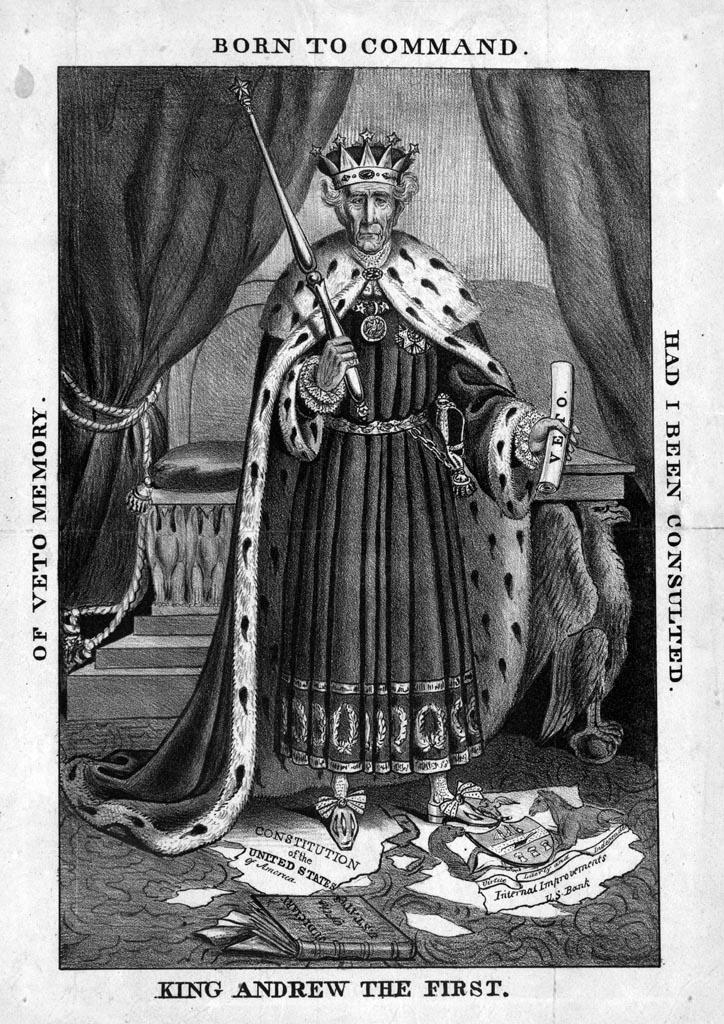King Andrew the First
A caricature of Andrew Jackson as a despotic monarch, probably issued during the fall of 1833 in response to the President's September order to remove federal deposits from the Bank of the United States. The print is dated a year earlier by Weitenkampf and related to Jackson's controversial veto of Congress's bill to recharter the Bank in July 1832. However, the charge, implicit in the print, of Jackson's exceeding the President's constitutional power, however, was most widely advanced in connection not with the veto but with the 1833 removal order, on which the President was strongly criticized for acting without congressional approval. Jackson, in regal costume, stands before a throne in a frontal pose reminiscent of a playing-card king. He holds a "veto" in his left hand and a scepter in his right. The Federal Constitution and the arms of Pennsylvania (the United States Bank was located in Philadelphia) lie in tatters under his feet. A book "Judiciary of the U[nited] States" lies nearby. Around the border of the print are the words "Of Veto Memory", "Born to Command" and "Had I Been Consulted."

Public Domain
Public Domain is a copyright term that is often used when talking about copyright for creative works. Under U.S. copyright law, individual items that are in the public domain are items that are no longer protected by copyright law. This means that you do not need to request permission to re-use, re-publish or even change a copy of the item. Items enter the public domain under U.S. copyright law for a number of reasons: the original copyright may have expired; the item was created by the U.S. Federal Government or other governmental entity that views the things it creates as in the public domain; the work was never protected by copyright for some other reason related to how it was produced (for example, it was a speech that wasn't written down or recorded); or the work doesn't have enough originality to make it eligible for copyright protection.